
Extending a small kitchen into a conservatory is a clever way to open two rooms into one and create an area that can be used for cooking and dining.
And, if, like mine, your kitchen is the darkest room in your house, a kitchen conservatory can bring in much-needed light.
Follow our tips on how to get the most out of a small kitchen conservatory to make all the elements work hard, so you get the most out of the space.
Lean-to conservatories are suitable if you have limited garden space, where a large-scale conservatory may not fit.
But while a lean-to-conservatory may be on the smaller side, they can still provide ample space to extend a kitchen. Especially if the two spaces are seamless and any walls are removed.
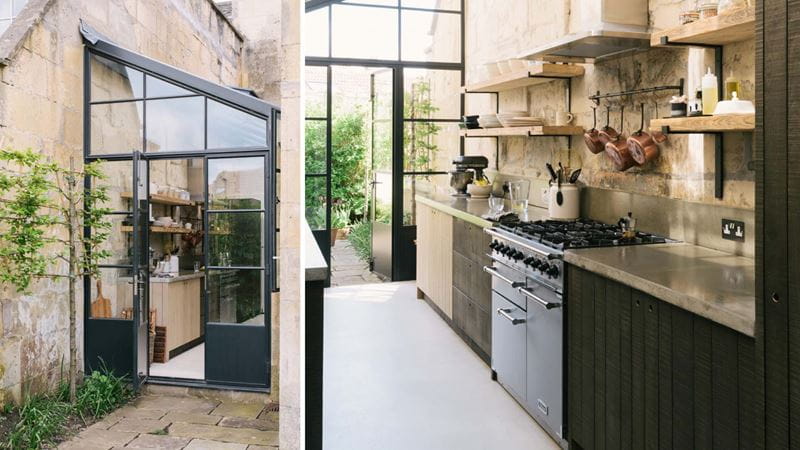
Karen Bell, sales director at David Salisbury says: “A small lean-to conservatory can open up a kitchen space filled with natural light, creating an airy and inviting room.
"Positioning it adjacent to the kitchen, visually expands the area and provides extra room for dining or additional storage.
"The seamless connection between the kitchen and conservatory enhances the overall living space. And it brings the outside closer to the inside of the home.”
Imagine a kitchen island that extends into your lean-to, bringing the two spaces together while giving you a view of your garden while you cook.
The glass roof will also bring in light, making it an ideal place to position prep areas in the kitchen, rather than designing them in darker corners of the space that don’t gain much light.
If you’re keen to create a real connection between your conservatory and garden, opt for bifold doors.
Architects Resi, believe bifold doors are a must-have in a small kitchen conservatory, as they can create a wide access point that opens up onto a garden – letting in light while creating a perfect view for when you’re dining.

Virginia Murray, director of sales and marketing at Mozolowski and Murray, says, “Bifold doors, when fully opened, take up less space than traditional doors.
"This is crucial in a small kitchen conservatory where every inch matters.”
Another advantage of bifold doors is that they can open up a whole side of your conservatory without the unsightly look of doorframes spoiling your garden view.
This seamless transition into the garden can also work beautifully if similar colour tones are chosen for the conservatory flooring and outside patio, blending one into the other.
If you opt for a conservatory design with a level threshold – where the conservatory floor and outside patio meet – you'll have no awkward step to trip over while you’re carrying afternoon tea into the garden.
“A fully glazed conservatory can help open up a small room and flood it with natural light, helping to create an impression of a more expansive space,” says Bell.
“The glass walls and roof maximise light penetration, making the area feel brighter and more inviting.”
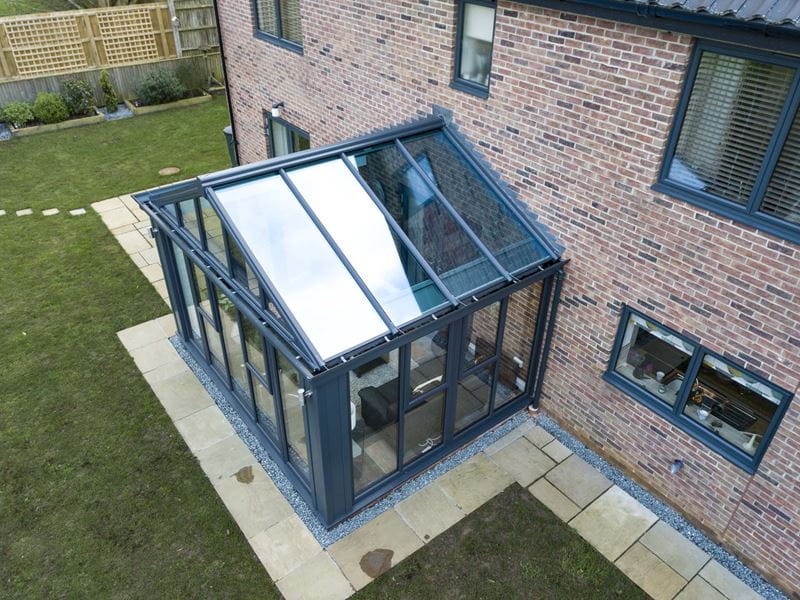
“With a small kitchen conservatory, it’s all about maximising space,” says William Durrant, owner of Herringbone Kitchens.
“When it comes to your work surface, make sure you invest in items that don't take up too much space, such as a hot tap.”
Multi-functional appliances, such as boiling water taps, offer cold, hot and boiling water, so there’s no need to have a kettle sitting on your worktop.
When space is at a premium, an integrated downdraft extractor fan is a wise choice as it doesn’t require wall space.
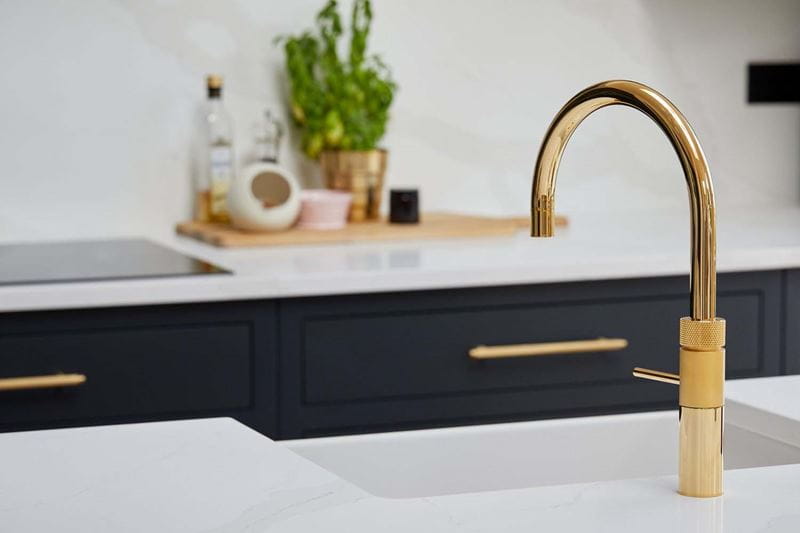
Storage is always a prime concern in any kitchen and should be carefully considered when combining two small spaces in one.
Make the most of full-height walls in the original part of your house and go for tall cabinets. In the conservatory, take advantage of the windows and opt for low-level cabinets.
This will also encourage light to flood in. An island unit with seating on one side and storage on the other is an ideal combination in a small conservatory kitchen.
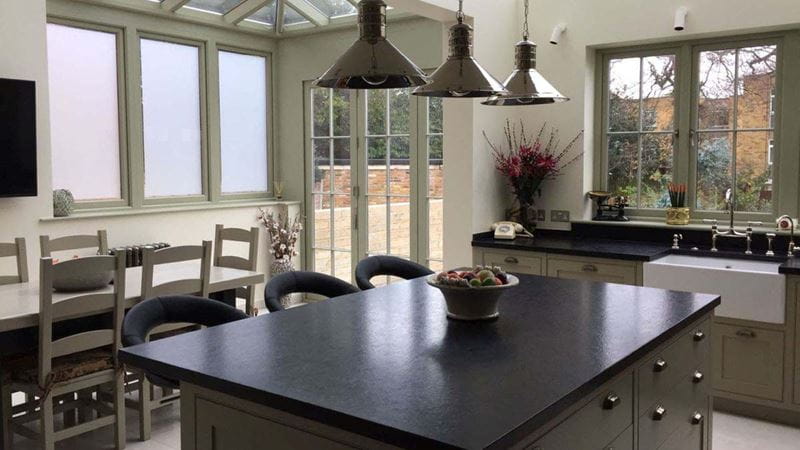
If your space is small, think about the dimensions of your dining table and chairs. There’s no joy in squeezing between a wall and a table to sit down for a meal, let alone getting back out once you’ve eaten.
Size down on these elements. But if you need a larger table for the odd occasion, choose one with an extending section.
This allows you to keep it compact for everyday use. Bench seating is another compact option for occasional use, which can be mixed with chairs for the days when you want more comfort.
The flooring can play a big part in joining one room to another, creating a smooth transition between two small spaces. But how do you design the flooring when you’ve got two rooms to think about?
“If you want to keep the flow, use the same tiles across both spaces,” says Abbas Youssefi, director at Porcelain Superstore.
“If you want to create an area that feels like its own space, pick a different style.”
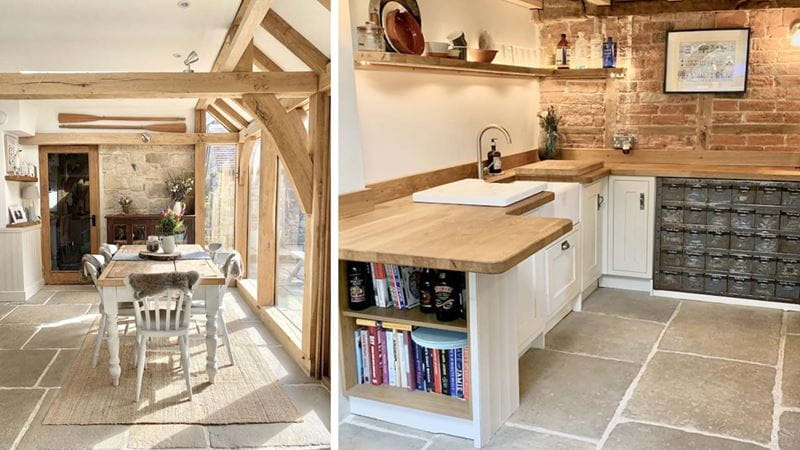
Whether you’re choosing flooring for a small kitchen conservatory or a larger space, in a high-traffic area – where you’re preparing food and going in and out of the garden – the flooring must be durable, easy to clean and non-slip.
Youseffi suggests picking porcelain tiles with an appropriate slip rating, suggesting a rating of R10 is suitable for a kitchen floor.
Porcelain tiles also have the advantage of being non-porous, making them easy to clean and stain-resistant.
Natural stone flooring is another option, so although it’s priced at the high end, it could be feasible for a small space. It will need waxing or sealing before use.
Tom Clifford, general manager at Westminster Stone says, "Natural stone is popular, but be aware of sandstone, which can be slippery when wet. Limestone is a better option for a kitchen.”
“Reproduction stone flooring is another option,” says Clifford. “It’s naturally non-slip and is suitable for use with underfloor heating, and the texture and character provide instant warmth.”
Apart from thinking about the interior, consider how the flooring will link with the outside.
Choosing a material that will match your patio – to ease the transition between the house and garden – will also give an illusion of a larger space, as your small conservatory kitchen will flow into your garden.
Sandstone or porcelain will work well for this scenario but be sure to select a non-slip version.
Open up the space

Sarah Harley, homes writer, says: “If you’re wondering about the best colour to choose for your cabinets, there’s no doubt that a lighter colour palette will help a small space feel bigger.
"If you’re keen on making it feel as large as possible, consider using a colour-drenching technique and choose the same colour for your cabinets and walls.
"Removing the boundaries that are created when you use different colours, helps trick the eye into believing the space is larger.”
But what if white isn’t your thing?
“Even if you’re not a fan of the all-white approach,” says Harley, “paler pastels or light, natural woods will all help to achieve the same effect, making your small space seem far bigger than you thought.”
Harley has another handy tip and suggests using handle-free doors so that the kitchen feels almost seamless in design.
Phillipa Cherryson is senior digital editor for Saga Magazine. Phillipa has been a journalist for 30 years, writing for national newspapers, magazines and reporting onscreen for ITV. In her spare time she loves the outdoors and is an Ordnance Survey Champion and trainee mountain leader.
View author page
Everything you need to know about protein, from how it benefits your body to the best high-protein foods – and how much you really need.



Let’s roast the myths! Not only are nuts less fattening than once feared, research shows they can cut the risk of heart disease too

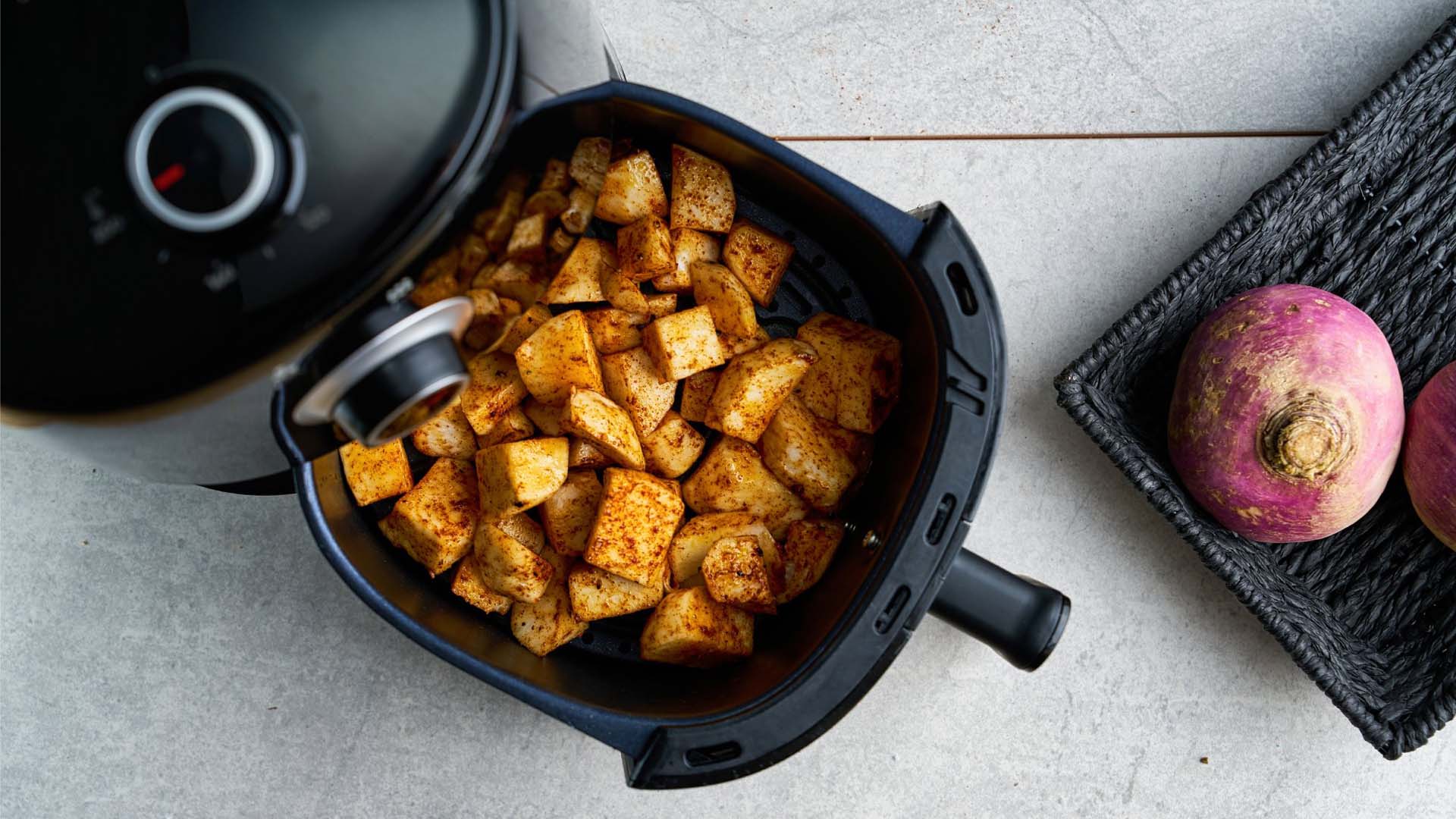

Strawberries don't just taste and look great, they are full of fibre, help your heart health and may even stave off dementia.

Looking after your gut health could be one of the biggest things that you can do for your overall health. Here are the best foods to keep your gut happy.

The foods that could help you live longer and protect against chronic illness.